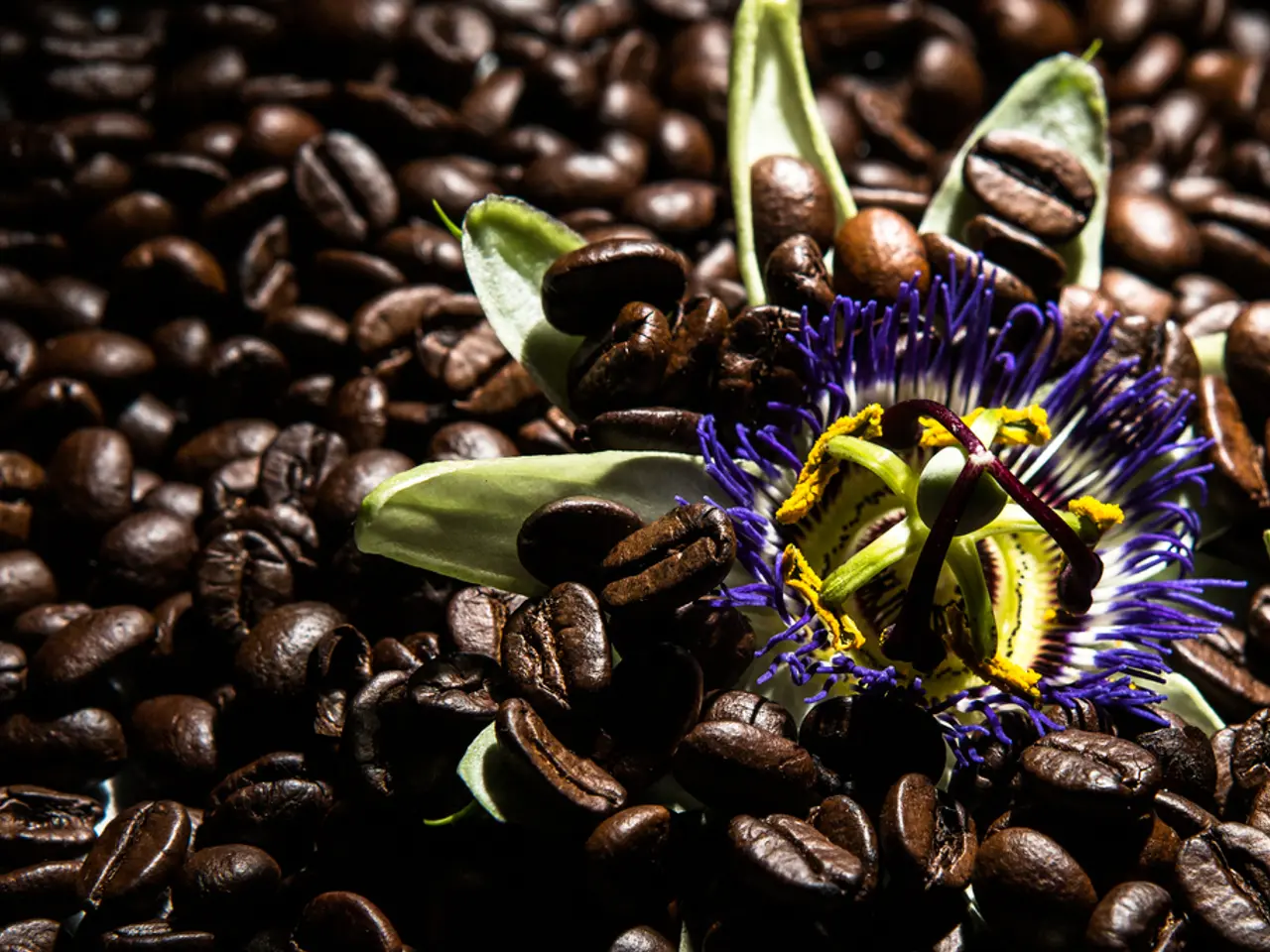Utilizing Coffee Grounds in the Garden: 4 Strategies to Boost Plant Health and Soil Integrity
Coffee grounds, a common household waste, can be transformed into a valuable resource for your garden. This sustainable gardening idea can help your plants thrive, while also reducing the amount of waste you dispose of.
Improving Soil and Fertilization
Coffee grounds offer a rich source of nutrients, including nitrogen, phosphorus, potassium, magnesium, calcium, and trace elements. These nutrients benefit acid-loving plants and those preferring slightly acidic conditions. To ensure slow nutrient release and prevent negative effects like compaction or moisture barrier formation, it's best to compost or mix coffee grounds well into the soil.
Composting Ingredient
Coffee grounds act as a "green" nitrogen source in compost, attracting earthworms and enhancing soil health. Adding coffee filters or pods (torn up) can also be beneficial. Maintaining a balance of green and brown materials is crucial when making compost at home.
Mulching
A thin layer (less than 1/2 inch) of coffee grounds can be used as mulch if covered by a thicker layer of other organic mulch like wood chips. This prevents compaction and impedes air and water flow, especially important for plants susceptible to root rot.
Pest Control
Sprinkling coffee grounds around plants can deter slugs and snails due to their texture and caffeine content, providing a natural pest-repellent barrier. There is also evidence that coffee grounds in compost may help suppress fungal pests on plants like tomatoes.
Cautions for Use
Avoid applying thick layers of coffee grounds directly on the soil surface to prevent compaction and moisture blockage. Limit use around plants whose seeds or seedlings might be inhibited by coffee grounds, as they can negatively affect seed germination for some species. Use coffee grounds as a supplement to other fertilizers and amendments rather than a sole nutrient source.
Expert Advice
Lucie Bradley from Easy Garden Irrigation suggests using coffee grounds for plants that feed heavily on nitrogen, such as blackberries, blueberries, and leafy greens. Russell Birchell, Founder of Hedging UK, recommends mixing dried coffee grounds into the top few inches of soil for plant growth.
By incorporating coffee grounds into your gardening routine, you can create a more sustainable and thriving garden. Whether you're composting, mulching, or using coffee grounds as a pest deterrent, this versatile waste product can help your plants blossom once again.
- Utilizing coffee grounds as a rich source of nutrients like nitrogen, phosphorus, and potassium can help acid-loving plants thrive in your garden, making them beneficial for your home-and-garden lifestyle.
- To boost soil health, composting coffee grounds can act as a "green" nitrogen source that attracts earthworms and balances other components in your home composting setup.
- For a natural pest-repellent barrier, sprinkle coffee grounds around susceptible plants such as blackberries, blueberries, and leafy greens to deter slugs and snails, contributing to sustainable living and a healthier wellness of your garden.
- By adhering to certain cautions, like avoiding thick layers of coffee grounds on the soil surface and minimizing use around seeds sensitive to coffee grounds, you can effectively integrate coffee grounds into your gardening routine and create a flourishing eco-friendly home garden.





